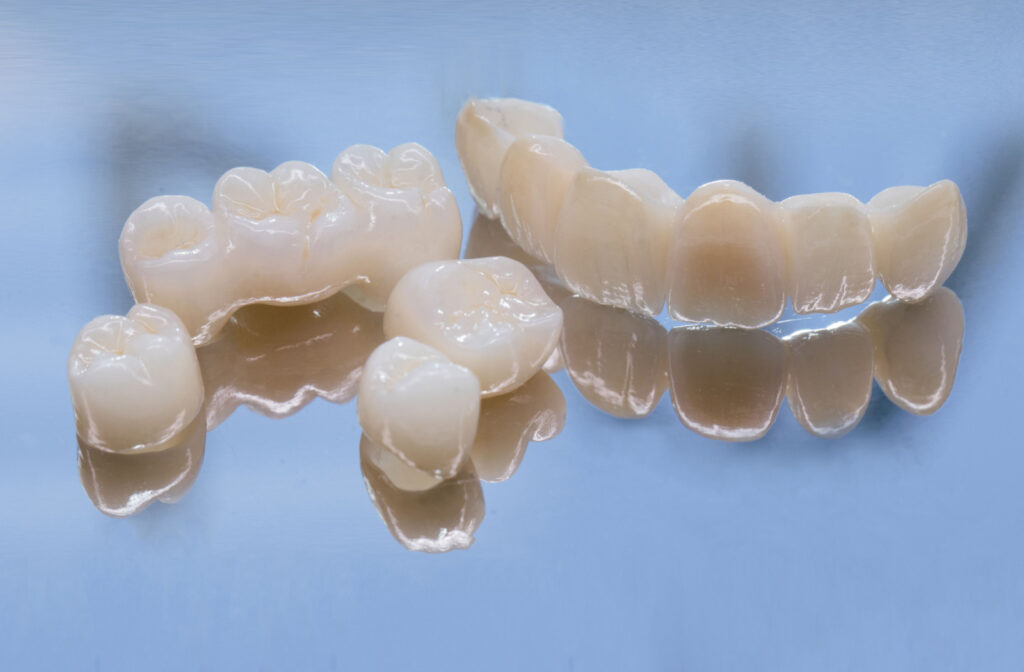Maintaining good oral health is an important part of your overall well-being, and you do a lot to help support your smile. You brush daily, you floss, and you see your dentist for regular dental exams and cleanings.
Unfortunately, circumstances such as accidents, genetics, and aging can cause damage to your teeth, making it necessary to seek restorative dental treatment. Restorative dentistry is a field that focuses on repairing or replacing teeth to help preserve your natural smile and prevent potential future oral health complications.
Restorative dentistry aims to sustain the functionality of your bite and enhance the aesthetics of your smile.
How Restorative Dentistry Protects Your Smile
Restorative dentistry is a dental field that involves procedures and techniques that aim to restore damaged teeth to their former glory. These procedures are focused on repairing and rebuilding the teeth, gums, and their surrounding structures.
The goal of restorative dentistry is to restore the teeth’s natural appearance and functionality while preventing further damage and decay. This is the core of a healthy smile.
When Do You Need Restorative Dentistry?
Restorative dentistry may be recommended when you have a dental issue that goes beyond cosmetic treatment. Some situations that require restorative treatment include:
- Tooth decay
- Trauma or injury to the mouth
- Tooth loss
- Cracked or fractured teeth
- Infection and inflammation
If you experience any oral health issues, it’s essential to seek immediate dental attention to prevent further damage and restore the function of your teeth.
Restorative Dental Procedures
Restorative dental procedures vary from mild to complex, depending on the level of damage and the treatment option chosen. Common restorative dental procedures include:
- Fillings: This procedure involves filling cavities caused by tooth decay with materials that help prevent the cavity from continuing.
- Crowns: Crowns are tooth-shaped caps that cover a damaged tooth, restoring its shape, size, and strength.
- Bridges: Bridges allow artificial teeth to fill the gaps left by 1 or more missing teeth. They’re anchored onto the surrounding teeth or dental implants.
- Implants: Dental implants are surgically placed in the jawbone to serve as artificial tooth roots. Once the implants integrate with the bone, the dentist can attach a crown or bridge to them.
- Inlays and onlays: When a cavity is too small for a crown but too big for a filling, a dentist can bond an inlay or onlay to your tooth like a puzzle piece.
- Dentures: Dentures are removable artificial teeth that can replace several missing teeth.
Benefits of Restorative Dentistry

Restorative dentistry has several benefits, including:
- Restoring teeth functionality: making it easier to chew, speak, and smile.
- Comfort: alleviate discomfort or pain associated with dental problems.
- Better oral health: help maintain good oral hygiene and prevent further damage to the teeth.
- Improve appearance: restore your smile.
Restorative or Cosmetic Dentistry?
There are 2 terms in dentistry that many people confuse: restorative dentistry and cosmetic dentistry. While the 2 are focused on different outcomes, they can both help with oral health and hygiene.
Cosmetic dentistry is all about the aesthetics of your teeth and smile. It’s the art of creating a beautiful smile. Cosmetic procedures focus on enhancing your teeth’s appearance, whether that is through teeth whitening, veneers, or orthodontics (including Invisalign).
The line between restorative and cosmetic dentistry can start to blur, and there’s often overlap in the procedures. For example, a dental crown can be considered both restorative and cosmetic. It restores the functionality of a damaged tooth while also improving its appearance. Veneers could be considered the same—they can fix chips or cracks in your teeth, while also giving you a brighter, whiter smile.
Much of the time, the difference comes down to why the procedure is being done rather than what the procedure is. It’s ultimately up to you and your dentist to determine which procedures can fit your needs.
If you’re experiencing pain or discomfort in your mouth, restorative treatments may take priority to help maintain your oral health. If you’re looking to brighten your smile or fix cosmetic issues, consider cosmetic treatments. It’s all about what is best for you.
Smile Like You Mean It
At Zen Dental Centre, we understand the power of a complete smile to support your oral health. Restorative dentistry can restore your teeth’s natural size, shape, strength, and functionality while preventing further decay and damage.If you’re experiencing dental issues, book an appointment for an exam today. With the right restorative procedure, you can enjoy the benefits of healthy teeth and a confident smile.



